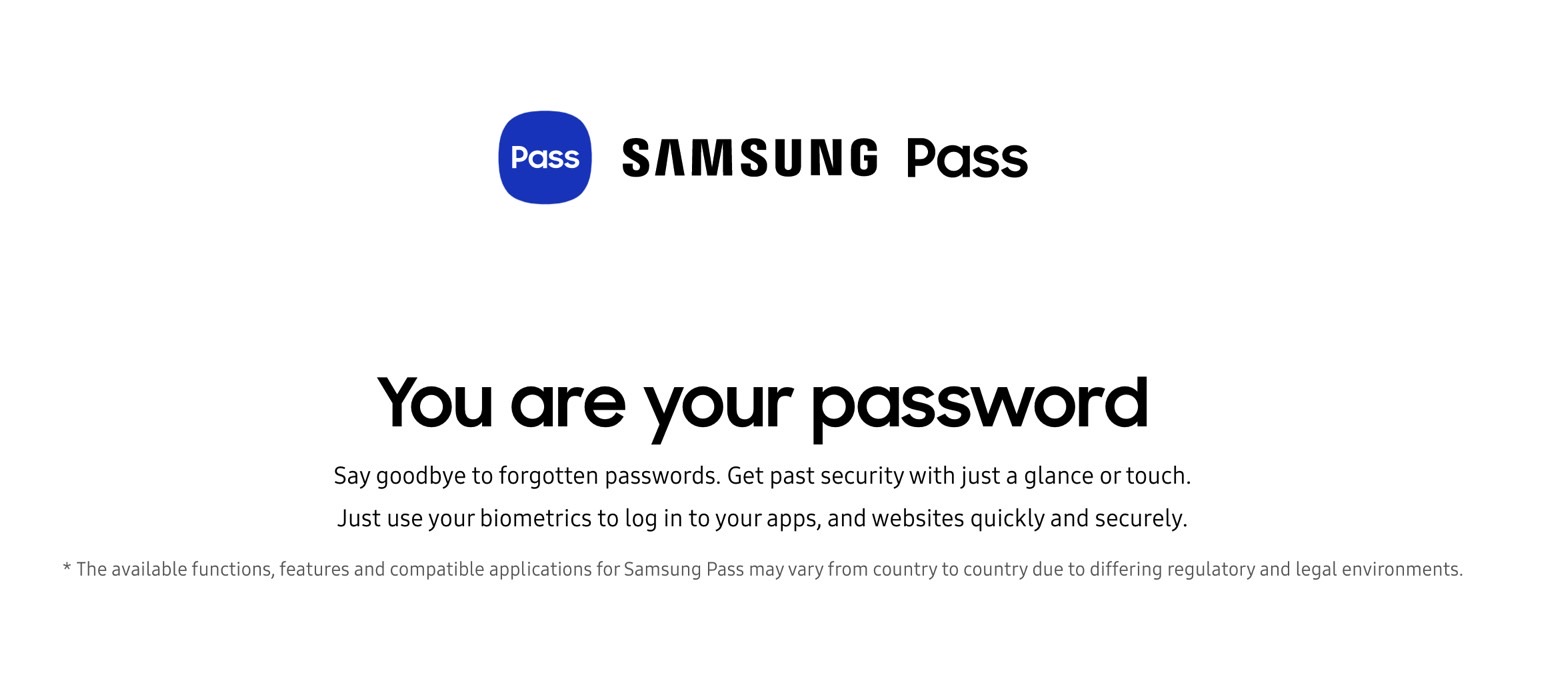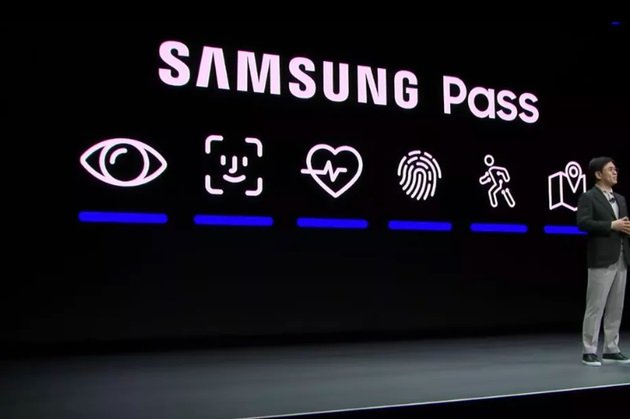Samsung did something during its CES 2020 presentation a few days ago that everyone in tech noticed. The company stole a well-known image of a signature iPhone feature and used it to show off its own products. The Face ID icon, which Apple associated with the 3D facial recognition feature it introduced in 2017 with the iPhone X, showed up during Samsung’s press event and left everyone in the audience confused. And soon enough, everyone criticized Samsung for blatantly copying Apple yet again — even some of Samsung’s biggest fans. The problem, however, is much bigger than merely copying Apple’s image.
Samsung used the Face ID icon during a segment of its CES presentation about Samsung Pass, a product that relies on biometrics to verify your identity and help you “say goodbye to forgotten passwords,” according to Samsung’s website (screenshot below).

Samsung’s slide below implies that all the listed sensors can be used to authenticate users, including the retina, Face ID, heart rate/pulse, fingerprints, activity sensors, and GPS. Samsung never explicitly named 3D face recognition or any of the other biometrics solutions in that slide.

The presence of the Apple-like Face ID icon in there is incredibly misleading. In fact, it’s a blatant lie. Users who know what the image means might assume that Samsung also has 3D face recognition on its devices, but that’s not the case at all. Samsung’s phones use 2D face recognition, which is far less secure than a solution like Apple’s Face ID. These two security features aren’t even in the same league. On top of that, most of Samsung’s smartphones don’t even have 2D face recognition.
Samsung’s own Samsung Pass site makes no mention of 3D face recognition, but does note “face recognition” as one of the biometrics used on Samsung devices. The Face ID icon isn’t used on the site. But what’s interesting about the screenshot below is that Samsung features images of a phone that doesn’t even exist. The handset below has no apparent technology that could be used for iris recognition, let alone 3D face recognition.

Apple’s Face ID tech is enabled by a sophisticated array of sensors and cameras that facilitate 3D face recognition (image below). The system is so complex and expensive to produce that it forced Apple to delay the iPhone X release in 2017 by more than a month. Only a few Android rivals attempted to copy Face ID, starting with Xiaomi and Huawei in 2018, and then LG and Google in 2019. Even Google, by the way, didn’t get it right from the get-go, as its 3D face unlock system worked on Pixel 4 phones even when users had their eyes closed.

Samsung was rumored to be working on 3D face recognition tech for future devices, but it’d be surprising to see a Face ID equivalent on the Galaxy S11 (S20) this year. These devices come with hole-punch displays that can’t accommodate all the required sensors.
By using the Face ID icon stolen from Apple, Samsung is pretending that its face recognition tech is just as secure as Apple’s, and that’s a lie. All the talk about data, user security, and privacy is even more annoying considering that only a few months ago, Galaxy S10 and Note 10 users discovered that a person could use any fingerprint to unlock these devices. That was an embarrassing security flaw that Samsung had to deal with, especially considering the sophisticated ultra-sound in-display fingerprint sensors in those phones should be superior to the optical sensors used by competitors. This security oversight was so severe that some banks advised customers not to use the fingerprint sensor on the S10 or Note 10 phones to log into their apps. Samsung fixed the issue rather quickly, but it’s a relevant example that shows Samsung might talk a bigger security game than it’s able to deliver.
Even though many of the tech blogs and news sites covering CES 2020 noticed Samsung’s blatant disregard for Apple’s intellectual property — again — they failed to realize the implications of that slide. Samsung is yet to come out with an apology or explanation for that Face ID icon. But, if you can still give the company the benefit of the doubt, an explanation is coming soon, maybe at a future event where Samsung’s own version of Face ID might be unveiled.
Finally, pretending it can support Face ID just like Apple isn’t the only Samsung vaporware from CES 2020. There’s an even bigger issue that needs to be acknowledged for what it is. Ironically, it’s the kind of futuristic product that will probably use Samsung Pass to secure user data and privacy.
Samsung’s CES 2020 Samsung Pass segment, where Apple’s Face ID icon was used, is embedded below.
https://www.youtube.com/watch?time_continue=3275&v=KL1B_sxgILQ








